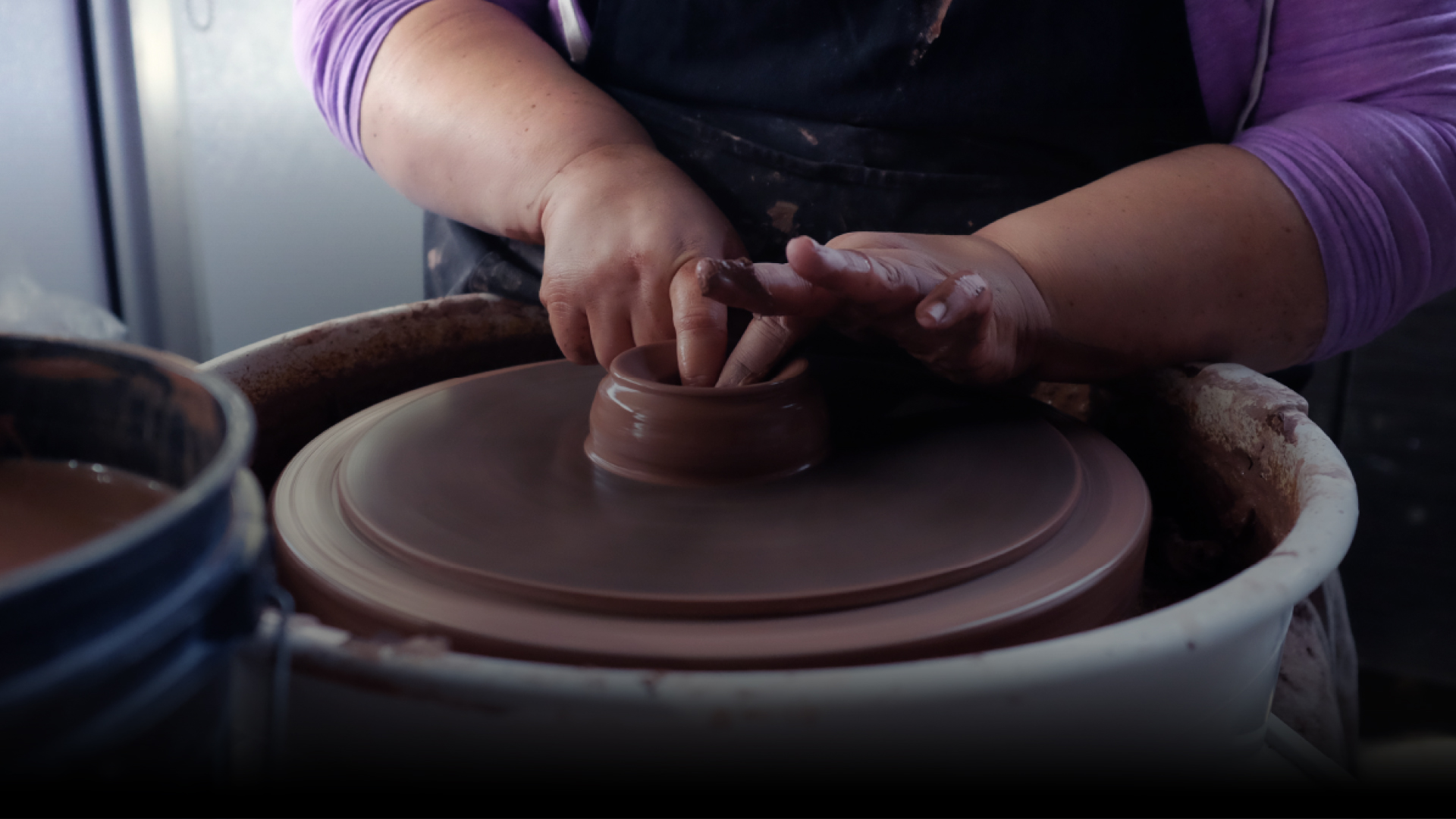
...
Reflection on (Externalized) Action

We are interested in the effect of EMG data visualization on potters’ reflection of their own practices. By externalizing the muscle activities, we hope to deepen the understanding of body movements in pottery practice and facilitate the learning of the tacit aspect of pottery.
Polanyi coined the term “tacit knowledge” to refer to the type of knowledge that one gains by embodied learning. Throwing, the construction of a ceramic object on the spinning wheel, is an important technique in pottery and has been identified as an - at times almost poetic - moment of tacit knowledge at work. Although this tacit knowledge of throwing can only be obtained by repetitive practices on the wheel, beginner potters usually seek documentations and demonstrations of such knowledge to familiarize themselves with the technique and get ready for the actual bodily practice.
These documentations and demonstrations that facilitate the learning of throwing include video recordings, illustrations, verbal communications from instructors about the actions, the materials, and their interaction.
But is this the farthest we can go about communicating this knowledge/technique?
In this project, we are trying to use digital media to capture the implicit aspects of the skillful actions in throwing. We collected the EMG data from expert potters’ hand muscles when they were throwing, and we tested the effect of presenting this piece of muscle data in the expert potters’ reflections on their own practices. The preliminary results suggest that the visualization of one’s EMG data collected in their throwing practices promotes more reflections on one’s actions and the quality of their actions compared to only providing the video recordings of their practices. Based on the results, the EMG data does seem to reveal or communicate a more tacit layer of the skillful actions in throwing.
Our system consists of an activity-sensing hardware part and a visualizing software part that logs the data and presents it after the practice. Both are used to affect the “reflection-on-action” of ceramic artists after throwing a basic bowl on the wheel. The hardware part is assembled from a Myo EMG sensor and an arduino microcontroller. The Myo attaches to one of the core muscles in the hand needed for throwing, the abductor pollicis brevis (APB). The connection points where the electrodes are attached are sealed using film tape to ensure water resistance. An arduino script registers the muscle activity data collected by the EMG sensor, sends them via a serial connection to a processing script, which records the data into a text file and visualizes them in relation to elapsed time.
For our pilot study, a total of three participants were recruited using the snowball sampling method. Each participant had at least 5 years of experience in ceramics. In the study, participants were asked to wear the sensing system and throw a bowl shape as similar as possible to a given example shape. After they completed throwing, we asked them to reflect on their practice for two times. The first time of the reflection, they were provided with only the video recordings of their practice. The second time of the reflection, the video recording and the EMG data visualization were both provided for their reflection.
To examine the effect of the EMG visualization, we generated the following hypotheses:
Hypothesis 1: The EMG data will lead to a perception change: potters are going to shift more of their attention from objects to actions.
Hypothesis 2: The EMG visualization will emphasize embodiment and lead to more reflections covering qualitative aspects of the action.
Hypothesis 3: The EMG visualization will promote more engaging reflection experience.
In sum, it indicated that the added visualization of participants’ EMG data affected the reflections. The EMG visualization appeared to be useful in promoting more reflections on the actions (Hypothesis 1) and the quality of the actions (Hypothesis 2). The provision of the EMG data also promoted more activities such as feeling and thinking that were beyond the throwing itself, as indicated by the participants, in the reflection sessions, which suggests that participants were more engaged in the reflection (Hypothesis 3).
Yilin Elaine Liu
Ph.D. student in Industrial Design, M.S. student in HCI - Digital Media
Michael Nitsche
Associate Professor in Digital Media
Benjamin Sugar
M.S. in Digital Media